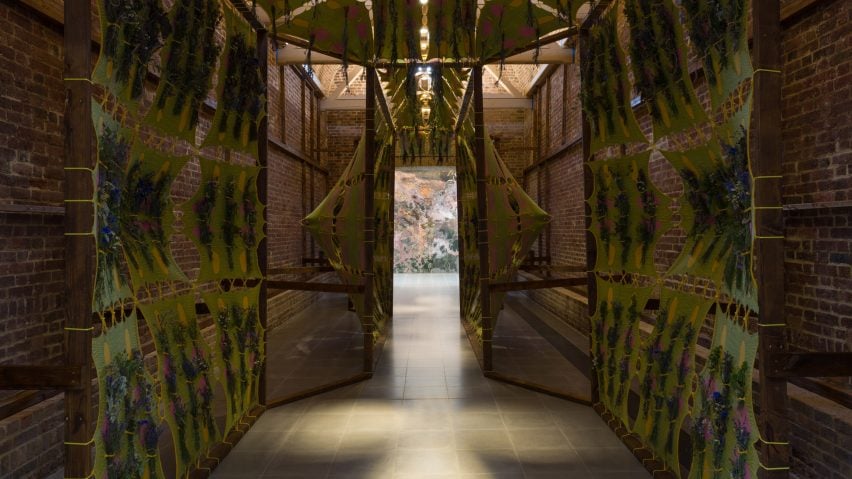
Serpentine installation an "invitation to develop an intimacy with plants"
Architect Yussef Agbo-Ola and cacao farmer Tabita Rezaire have designed an installation at London's Serpentine Gallery made of wood recycled from past exhibitions that explores medicinal plants.
Called Ikum: Drying Temple, the project is currently on display at Serpentine North Gallery in London as part of Back to Earth, a group exhibition centred on the climate crisis.
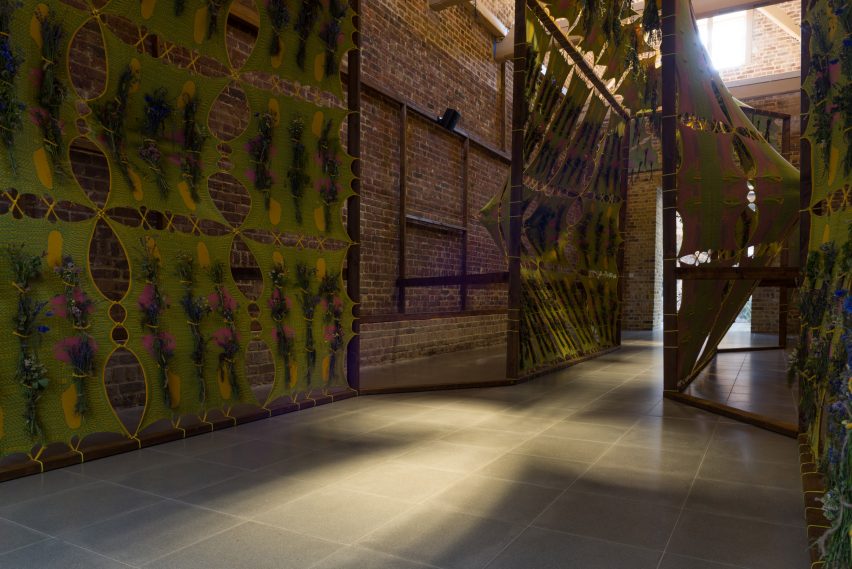
The installation features a wooden frame repurposed from discarded structures that were previously used in other Serpentine exhibitions.
Held together by recycled cable ties, knitted "tensiles" made from dyed cotton fibres are stretched over the wooden frame to form a structure that intends to resemble an ant.
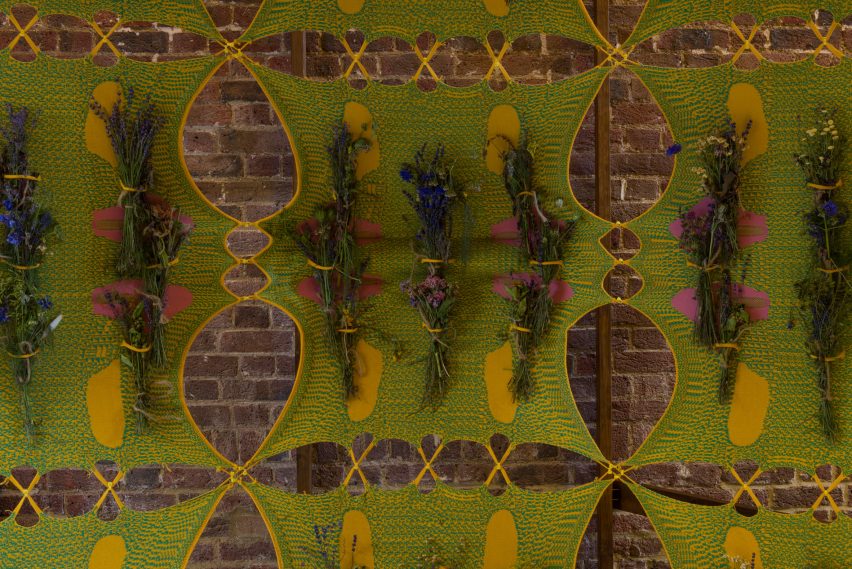
Specially selected plant cuttings were tied in bouquets and looped into the cotton, which Agbo-Ola and Rezaire chose for their connection to each of the collaborators' different practices linked to aromatherapy for mental health and womb health.
These include rosemary, lemon thyme and green sage as well as dyer's chamomile and two different types of lavender.
Over the duration of Back to Earth, the plants will slowly dry and release their scent for visitors to encounter.
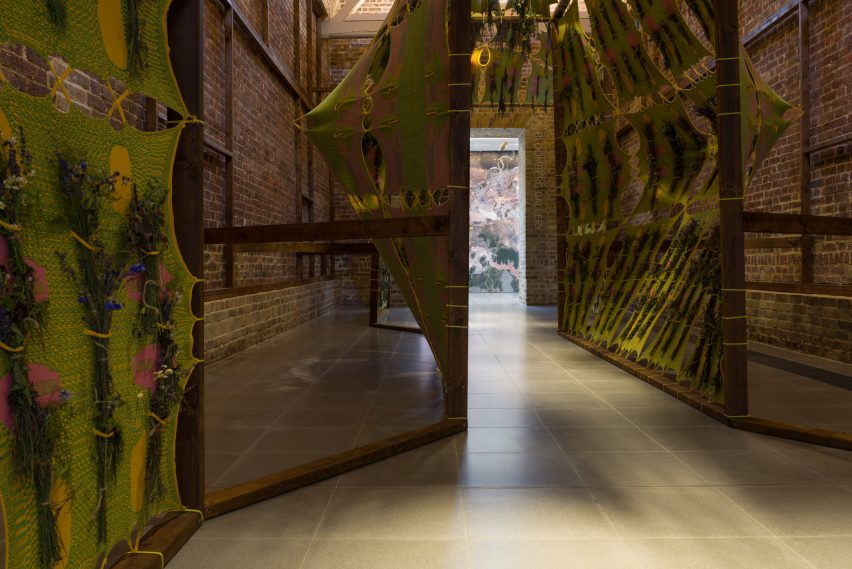
"Through the process of plants losing their internal water from drying, they release an orchestra of aromas that can be experienced and reflected upon in contemplation," Agbo-Olda and Rezaire told Dezeen.
"Ikum is a living medicinal entity," continued Agbo-Olda. "What I perceive as medicinal in my works is how matter transforms."
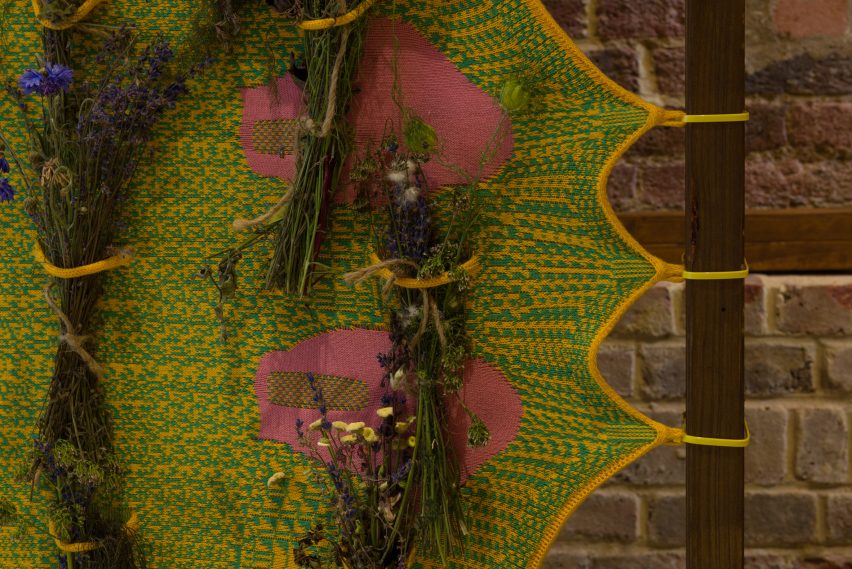
The installation's ant shape intends to draw attention to the insect's role in the dispersal of seeds and general soil health, according to the project's creators.
"Ikum acts as an architectural vessel for the subtle metamorphosis of the life and death of plants to be experienced through the spine of an ant," said Agbo-Ola.
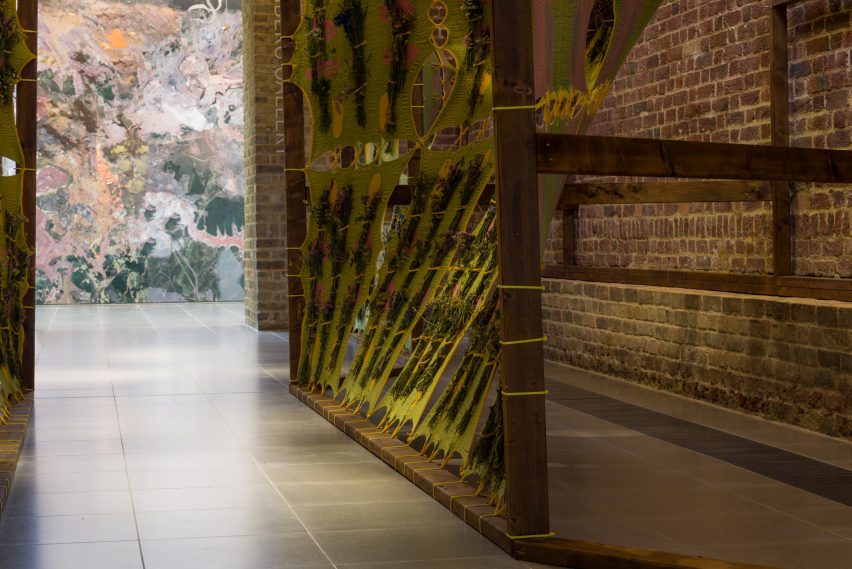
The architect explained that the structure's appearance was informed by a series of existing artworks created by his practice Olaniyi Studio, which take cues from the "symbolic textile traditions" of the Yoruba and Cherokee peoples.
An immersive soundscape called Plant Lungs in River Dust also composed by the architect accompanies the work.
At the end of the exhibition, the installation will be dismantled and its knitted tensiles will be relocated to Amakaba, an environmental centre for "wisdom and healing" founded by Rezaire in the Amazonian rainforest of French Guiana. As well as a farmer, Rezaire also works as a doula.
Once in the rainforest, the tensiles will be fitted with fresh plants that will be used in various womb health practices once dried, including vaginal steams or to soothe symptoms of menopause.
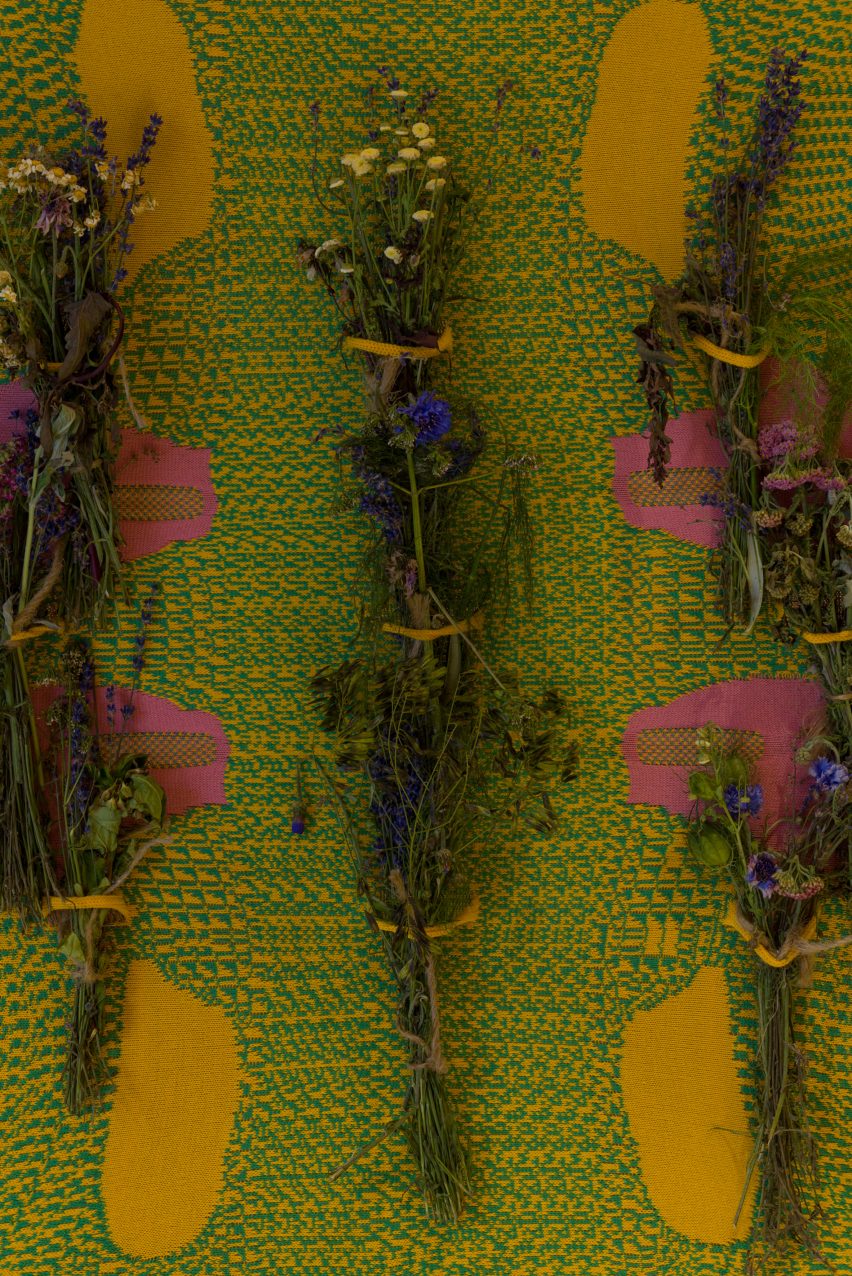
The plants on display at the Serpentine will be gifted to visitors on the last day of the exhibition in an attempt to "extend Ikum's presence".
At Amakaba, Agbo-Ola and Rezaire plan for the tensiles to take the form of a drying nursery and continue to decay and eventually become part of the rainforest.
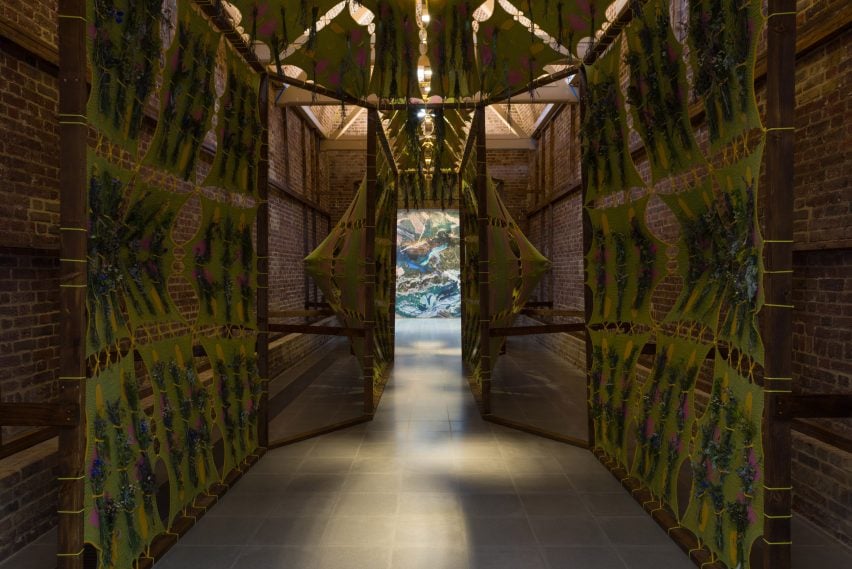
"Materials are always entangled in complex histories – they also carry and diffuse different energies," explained Rezaire.
"For me, it was essential to work with natural fibers as the temple is designed for the forest and will live within it."
"Ikum is an invitation to develop an intimacy with plants, to feel the power of their scents through decay, and to listen to their voice," concluded Agbo-Ola and Rezaire.
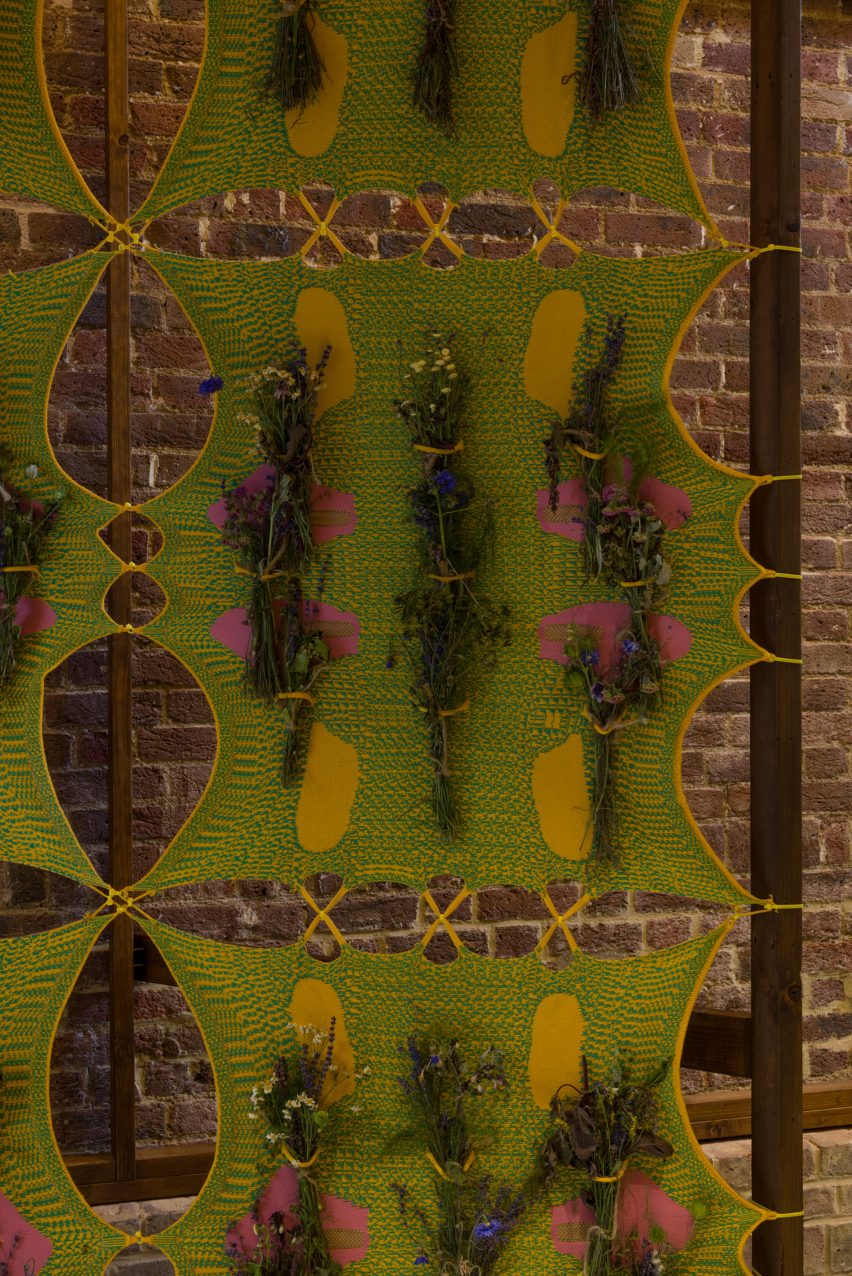
Similar plant-related installations include lantern-like sculptures in Texas clad in bioplastic skins made from local plants and Conference of the Trees – a temporary project by Es Devlin including 197 trees and plant species that was staged during the COP26 climate conference.
The images are courtesy of Yussef Agbo-Ola, Tabita Rezaire and The Serpentine Gallery.
Back to Earth is on show at The Serpentine North Gallery in London from 22 June to 18 September 2022. See Dezeen Events Guide for an up-to-date list of architecture and design events taking place around the world.